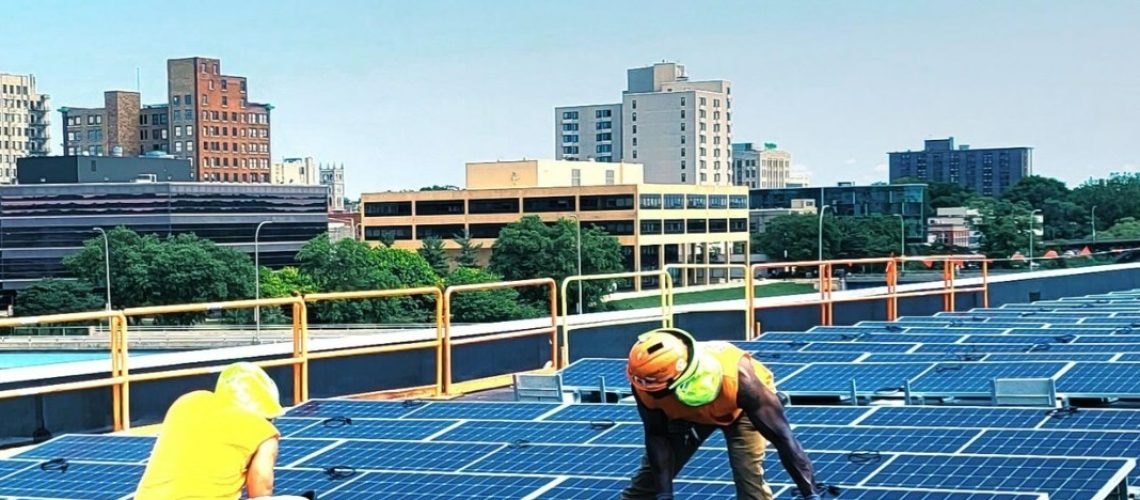The software tool is designed to connect eligible households to community solar projects through the Department of Health and Human Services’ HHS’s Low-Income Home Energy Assistance Program (LIHEAP).
One of the major benefits of community solar is it opens access to customers that may not have a suitable roof or financial situation for rooftop solar. It allows residents, businesses, organizations, and municipalities to subscribe to a portion of a solar asset’s electricity generation to receive credit on their electricity bills for the power it generates.
At its annual summit, the U.S. Department of Energy’s (DOE) National Community Solar Partnership (NCSP) challenged the community solar industry to meet a target of 20 GW of community solar by 2025, enough energy to power 5 million households and create $1 billion in energy savings for subscribers. With the recently announced Low-Income Bonus Credit Program, community solar developers will be seeking low-income households as subscribers to their solar projects.
The U.S. Department of Energy (DOE) and the U.S. Department of Health and Human Services (HHS) are partnering on a pilot program of the Clean Energy Connector software that is designed to connect up to 40,000 Low-Income Home energy Assistance (LIHEAP) eligible households with available community solar projects. Currently, the pilot program is offered in Illinois, New Mexico and Washington, D.C., through LIHEAP program administrators.
“Renewable energy is by far the cheapest form of power and now, thanks to innovative solutions developed under the Biden-Harris Administration, more households across America can access the health and savings that solar power provides,” said U.S. Secretary of Energy Jennifer M. Granholm. “DOE’s partnership with HHS will increase the deployment of community solar, helping thousands of families lower their energy bills and in turn reduce their energy burden, ensuring Americans across the nation are included as we transition to a clean energy economy.”
HHS said that enrolled participants could see meaningful electricity bill savings, in alignment with the National Community Solar Partnership goal of 20% household savings, equal to $370 per household annually.
“LIHEAP keeps families and individuals safe and healthy by providing heating assistance in the winter and cooling assistance in the summer,” said U.S. Secretary of Health and Human Services Xavier Becerra. “Connecting LIHEAP-eligible households with the benefits and bill-savings of community solar will also have a lasting impact and provide increased economic security for families.”
According to HHS, approximately 5.7 million households in the United States receive LIHEAP assistance with heating costs. LIHEAP assists eligible households with their heating and cooling costs, weatherization, and energy-related home repairs and now it can help them save money on their electric bills by transitioning to solar.
Developed by the National Renewable Energy Laboratory (NREL) with support from the National Energy Assistance Directors Association and the National Association of State Energy Officials, the Clean Energy Connector software is designed to help state community solar program administrators vet the community solar providers. Local LIHEAP agencies and county social support offices in Illinois, New Mexico and Washington D.C. assisted in the development and testing of the tool, with Colorado, New Jersey, and New York participating as advisor states.
DOE also convened an advisory group that provided strategic support to Connector development through 2023, including the American Public Power Association, Clean Energy States Alliance, Edison Electric Institute, National Community Action Partnership, National Consumer Law Center, National Energy and Utility Affordability Coalition, National Energy Assistance Directors Association, National Rural Electric Cooperative Association, and Solar United Neighbors.
Households looking for LIHEAP assistance should visit energyhelp.us or call 1-866-674-6327. DOE will hold a webinar on April 10, 2024 at 12 p.m. ET.






